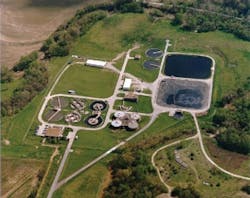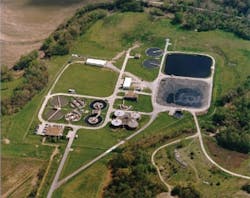Overcoming obstacles to effective and efficient use of area wide on-line monitoring systems
By Dan Kroll and Nicole Bertram
On-line monitoring systems used to survey our water supply networks are becoming more ubiquitous everyday. After the terror attacks of 2001, the additional inducement of water security was added to the ever-present element of water quality as a motivating factor for monitoring. These twin drivers have led to a rapid deployment of monitoring schemes for distribution systems, source water and all aspects of the water supply network.
These systems commonly consist of a means of measuring a variety of basic on-line water quality parameters such as pH, Chlorine Residual, Conductivity, Turbidity, Total Organic Carbon, etc. They are often coupled with and overlain by interpretive algorithms and software for event detection and classification. These systems facilitate an unprecedented minute-by-minute overview of the basic water quality anywhere in the system. However, regardless of the obvious advantages for water quality and security, there are some drawbacks to these monitoring platforms.
The main deficiency in these systems lies in their widespread geographic deployment. Monitoring site access for instrument verification, alarm programming, data acquisition and a wide variety of other housekeeping and emergency response tasks can become daunting when it is understood that a system may be comprised of tens or even hundreds of individual monitoring nodes spread over a network. This, combined with the expediency of being able to view the network as a whole so as to be able to correlate and relate patterns of response, makes the need for a hierarchical centralized system of command and control an absolute must.
The capabilities of these systems essentially provide utilities with a virtual command center for critical water distribution monitoring and control from a location or locations of their choice. This allows for effective response and coordination of multiple sites and functions within the organization resulting in the minimization of the adverse impacts that could result from an event.
In the past, utilities could either physically download data from an individual instrument monitor on-site or use a remote service such as VNC (Virtual Network Computing) to view one distribution-monitoring site at a time. With these programs every action took a significant amount of time. Only a single computer could access the data. With the new systems, multiple utility personnel can simultaneously view all the data together, giving the utility a comprehensive, immediate and real-time picture.
On a single screen, utility personnel can simultaneously view the current status of all monitoring points in the network, download data and clear alarms remotely. Users can easily "drill down" into data from an individual monitoring point in the same manner as if they were physically standing at the site.
Intelligent algorithms and the hierarchical software, combined with utility personnel's ability to collectively access real-time and historic data, can provide utilities with a deeper, much more accurate understanding of their network's performance. This in turn can allow them to streamline operations, reduce costs and labor, and boost efficiency -- all while further strengthening public health protection.
About the Authors
Dan Kroll is chief scientist at Hach Company's Homeland Security Technologies division, in Loveland, CO. He has been the lead researcher on a variety of method development projects for the physical, chemical and microbiological quality of water and soils for which he holds several patents.
Nicole Bertram has been with Hach since 2000 and is responsible for managing all HST products. She also handles product marketing and market research for HST. Her continual focus on meeting customer needs and the highest quality standard helps ensure Hach HST products are the most reliable and advanced products available. She has a BS in Forest Hydrology and Soils from the University of Georgia.
November 2009
###

